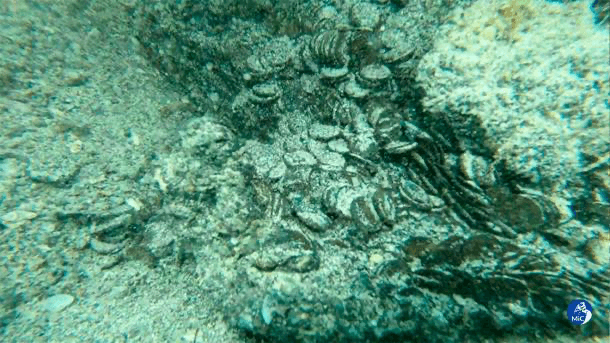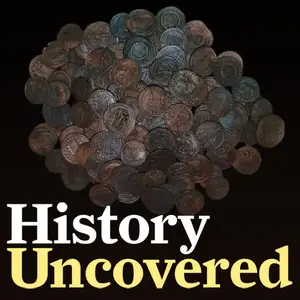The coins, which date back to the 4th century, were preserved in excellent condition, with archaeologists saying even the most weathered were still legible.

Italian Ministry of CultureThe Roman coins date back to the 4th century C.E., after currency was standardized in the Roman Empire.
Divers in Italy discovered tens of thousands of ancient Roman coins off the coast of the island of Sardinia.
A diver noticed something metallic in the seagrass and alerted authorities. Divers from the Italian Ministry of Culture’s art protection squad and undersea archaeology department were sent out to investigate.
They found between 30,000 and 50,000 ancient Roman coins, made of bronze and “in an exceptional and rare state of conservation,” according to Heritage Daily. They are believed to be from the early 4th century.

Italian Ministry of CultureThe coins were discovered in sea grass just off the coast of the Italian island of Sardinia.
The coins are of a type called follis, bronze coins introduced in the late 3rd century C.E. by Roman Emperor Diocletian as a standardized form of currency, known as the Edict on Maximum Prices. Previously, each emperor and leader of the empire had minted their own coins.
“The restoration and conservation operations of the coins and materials found will allow us to expand and deepen our knowledge of the context of the finds from which a lot of information can still be extracted,” the ministry said in a statement.

Italian Ministry Of CultureBetween 30,000 and 50,000 bronze Roman coins were found off the coast of Sardinia.
The state of preservation of the coins was incredible, according to the ministry. Even the few coins that were damaged still had legible inscriptions, with minting dates from 324 C.E. to 340 C.E.
Experts believe the coins could have come from the remains of a shipwreck. Investigations are continuing around the site of their discovery to look for any further remains or artifacts.

“The treasure found in the waters off Arzachena represent one of the most important coin discoveries” in recent years, said Luigi La Rocca, a Sardinian archaeology department official, according to the Associated Press. “[The find is] further evidence of the richness and importance of the archaeological heritage that the seabed of our seas, crossed by men and goods from the most ancient of epochs, still keep and preserve.”
The find is one of the largest caches of ancient coins ever discovered. It is even larger than the notable discovery of 22,000 Roman coins in 2014.
That year, Laurence Egerton unearthed the coins with a metal detector in Devon, England. He reported the find to authorities and then slept in his car for three nights to guard the stash.
“It’s by far the biggest find I’ve ever had,” Egerton told the Guardian. “It really doesn’t get any better than this.”
But despite the massive amount of coins found, it wouldn’t have amounted to much financially.
“It is one of the largest coin hoards of the fourth century ever found within the Roman empire but, despite the number of coins found, the financial value would not have been great, amounting to approximately four gold coins,” said Dr. Roger Bland from the British Museum. “This sum of money would possibly have provided the ration of four soldiers for one year or a worker’s pay for two years.”
After reading about the Roman coins found off the coast of Italy, read about the Saddle Ridge hoard, the biggest buried treasure in U.S. history. Or, learn about the 1933 Double Eagle, the most valuable coin in the world.





